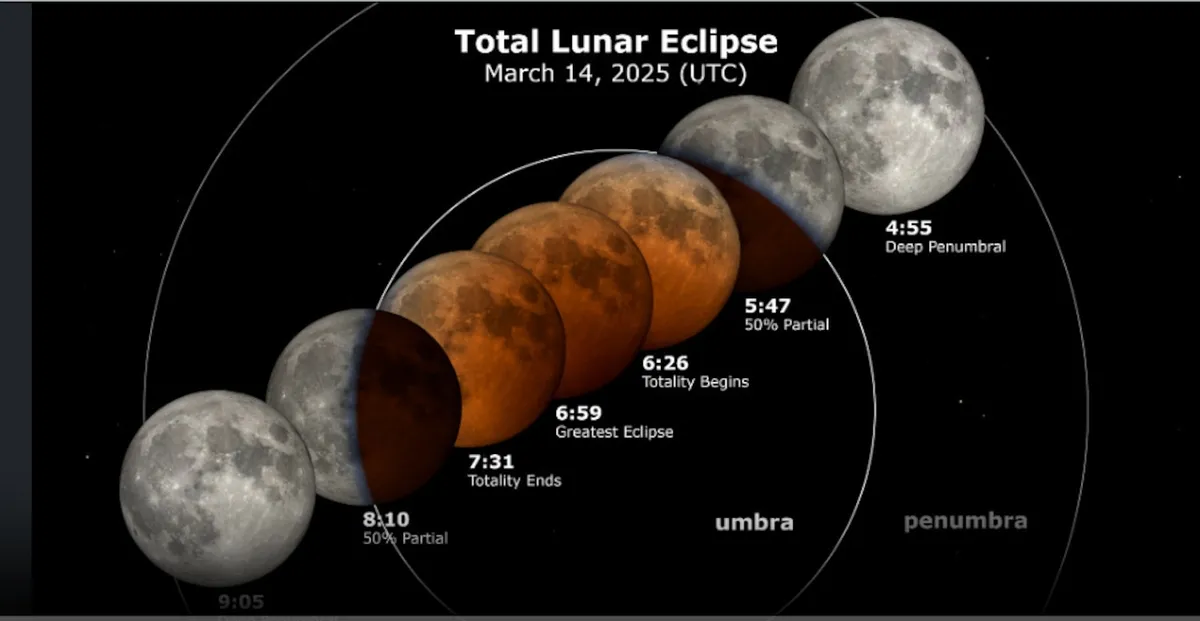
The eagerly anticipated total lunar eclipse, marking the first occurrence since 2022, is set to illuminate our skies in March. This celestial event will showcase a mesmerizing Blood Moon, which will appear with a reddish-orange hue to observers on Earth. According to NASA, the lunar eclipse will commence late on the night of March 13 and conclude in the early hours of March 14.
A total lunar eclipse transpires when the Moon, Earth, and Sun align in such a way that the Moon moves into Earth's shadow. NASA describes this phenomenon by stating, "In a total lunar eclipse, the entire Moon falls within the darkest part of Earth's shadow, called the umbra. When the Moon is within the umbra, it appears red-orange. Lunar eclipses are sometimes referred to as ‘Blood Moons’ due to this characteristic appearance."
The distinct reddish tint of the Blood Moon during a lunar eclipse can be explained by the way sunlight interacts with Earth's atmosphere. NASA elaborates, "During a lunar eclipse, the Moon appears red or orange because any sunlight that isn't obstructed by our planet is filtered through a thick slice of Earth's atmosphere on its way to the lunar surface. It's as if all the world’s sunrises and sunsets are projected onto the Moon."
During this particular lunar eclipse, the phase of totality will last for just over an hour, offering a spectacular view for skywatchers. After the totality phase, the Moon will gradually emerge from Earth's shadow, returning to its usual appearance. For those hoping to witness this event, clear skies will be crucial. Below, you'll find a NASA video that provides a preview of what to expect during this captivating astronomical phenomenon.